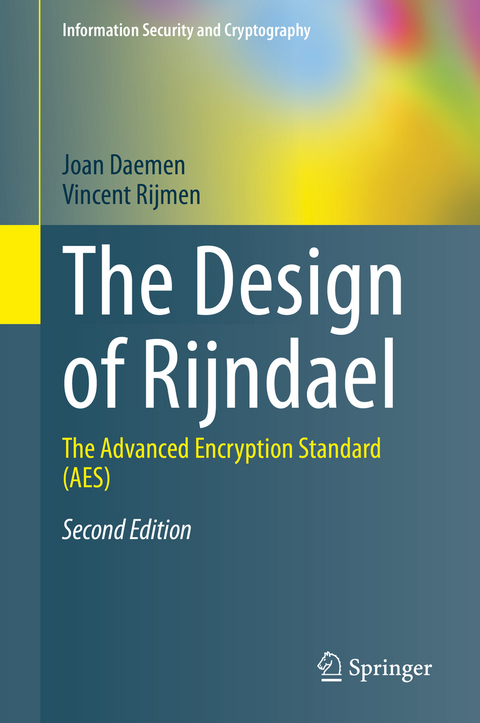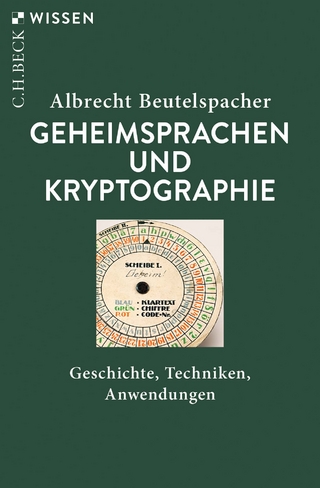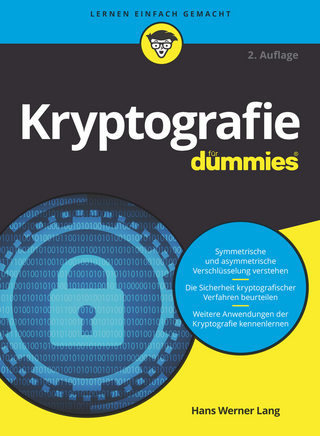
The Design of Rijndael
Springer Berlin (Verlag)
978-3-662-60768-8 (ISBN)
This is the authoritative guide to Rijndael, the block cipher whose elegance, efficiency, security, and principled design made it the Advanced Encryption Standard (AES), now the most widely applied data encryption technology.
The authors developed the Rijndael algorithm and in this book they explain the AES selection process and their motivation in the light of the earlier Data Encryption Standard. They explain their design philosophy and implementation and optimization aspects, and the strength of their approach against cryptanalysis. They support the text with the relevant mathematics, reference code, and test vectors.
In this new edition the authors updated content throughout, added new chapters, and adapted their text to the new terminology in use since the first edition. This is a valuable reference for all professionals, researchers, and graduate students engaged with data encryption.
After graduating in electromechanical engineering Joan Daemen was awarded his PhD in 1995 from KU Leuven. Researching there in the ESAT/COSIC lab he developed the Rijndael algorithm with Vincent Rijmen, and this was selected by NIST as the new Advanced Encryption Standard in 2000. After over 20 years of security industry experience, including work as a security architect and cryptographer for STMicroelectronics, he is now a professor in the Digital Security Group at Radboud University Nijmegen. He codesigned the Keccak cryptographic hash which was selected as the new SHA-3 hash by NIST in 2012. In 2017 he won the Levchin Prize for Real World Cryptography "for the development of AES and SHA3". In 2018 he was awarded an ERC advanced grant for research on the foundations of security in symmetric cryptography. After graduating in electronics engineering, Vincent Rijmen was awarded his PhD in 1997 from KU Leuven. Researching there in the ESAT/COSIC lab he developed the Rijndael algorithm with Joan Daemen, and this was selected by NIST as the new Advanced Encryption Standard in 2000. After work in the security industry, as chief cryptographer at Cryptomathic, he was first a professor at Technische Universität Graz and now in the COSIC Lab in Leuven. He is also an adjunct professor at the Selmer Center (University of Bergen). In 2019, he was named a Fellow of the International Association for Cryptologic Research for "co-designing AES, contributions to the design and cryptanalysis of symmetric primitives, and service to the IACR". His research interests include symmetric cryptography and cryptanalysis, side-channel attacks, and mathematical theories for the design of symmetric cryptography primitives.
The Advanced Encryption Standard Process.- Preliminaries.- Specification of Rijndael.- Implementation Aspects.- Design Philosophy.- The Data Encryption Standard.- Correlation Matrices.- Difference Propagation.- The Wide Trail Strategy.- Cryptanalysis.- The Road to Rijndael.- Correlation Analysis in GF(2n).- On the EDP of Two- and Four-Round Differentials and the ELP of Two- and Four-Round Hulls.- Two-Round Differential Trail Clustering.- Plateau Trails.- App. A, Substitution Tables.- App. B, Test Vectors.- App. C, Reference Code.- Bibliography.- Index.
"I enjoyed reading this book, which is now sitting on my new office bookshelves, as it brought back memories of the late 1990 and early 2000s crypto waiting game, going from round to round in the NIST competition." (Sven Dietrich, Cipher, ieee-security.org, March 21, 2021)
| Erscheinungsdatum | 05.03.2022 |
|---|---|
| Reihe/Serie | Information Security and Cryptography |
| Zusatzinfo | XVIII, 282 p. 49 illus. |
| Verlagsort | Berlin |
| Sprache | englisch |
| Maße | 155 x 235 mm |
| Gewicht | 607 g |
| Themenwelt | Informatik ► Theorie / Studium ► Kryptologie |
| Schlagworte | Advanced Encryption Standard (AES) • Block Ciphers • Cryptanalysis • Cryptology • Data Encryption Standard (DES) • rijndael • symmetric-key encryption |
| ISBN-10 | 3-662-60768-9 / 3662607689 |
| ISBN-13 | 978-3-662-60768-8 / 9783662607688 |
| Zustand | Neuware |
| Haben Sie eine Frage zum Produkt? |
aus dem Bereich


